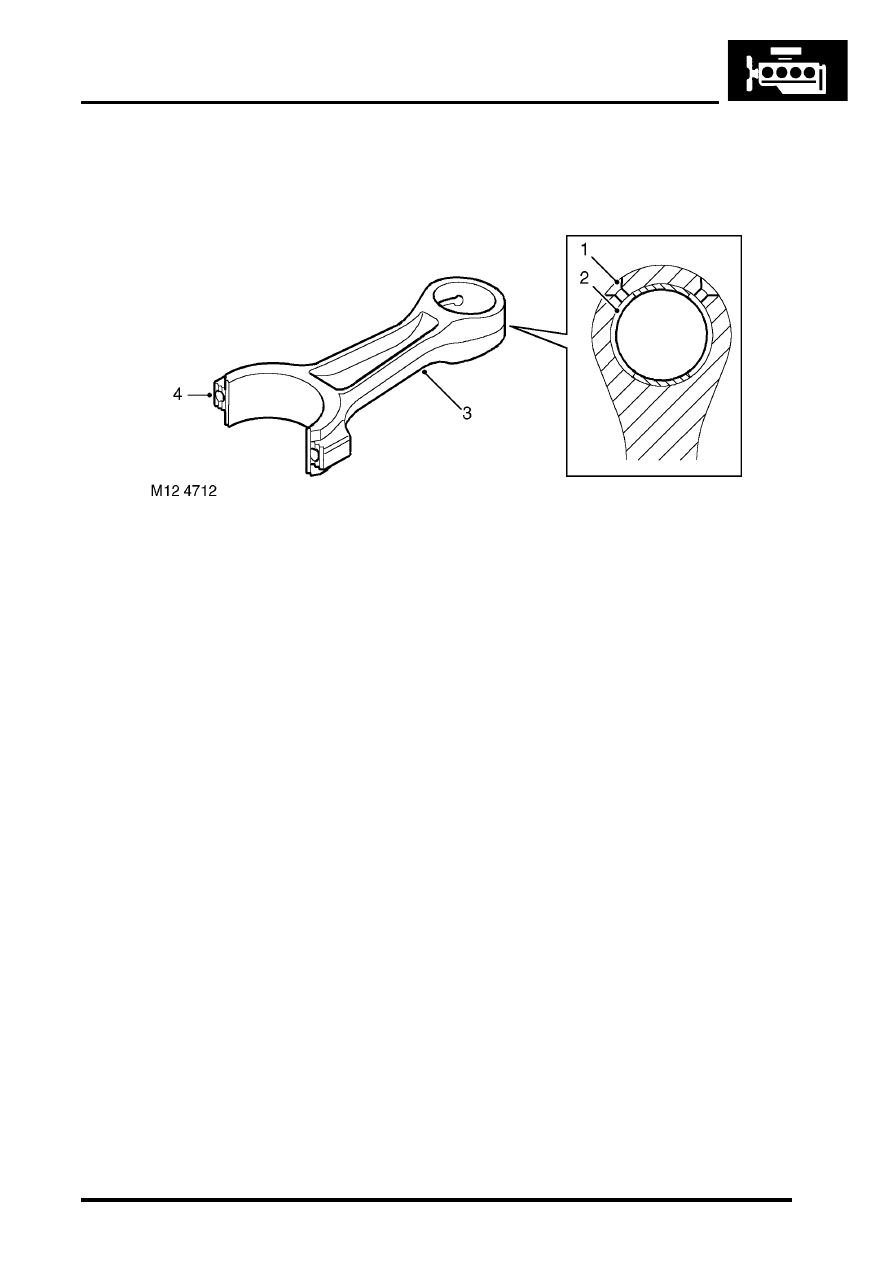Discovery 2. Manual - part 404

ENGINE - TD5
DESCRIPTION AND OPERATION 12-1-13
Two plastic dowels are used to locate the cylinder head to the cylinder block and must be replaced every time the
cylinder head is removed from the cylinder block.
Connecting rods
1 Small-end oil holes
2 Small-end bushing
3 Connecting rod
4 Serrated fracture
The connecting rods are machined, H-sectioned steel forgings which feature a fracture-split at the big-end between
the connecting rod and the bearing cap. The connecting rod features a serrated fracture across the big-end at right
angles to the length of the connecting rod, this forms a unique mating surface between the connecting rod and the
fractured end which is used as the big-end cap. The use of a fracture-split in the big-end of the connecting rod ensures
a perfect match for assembly on the crankshaft bearing journals and provides the connecting rod with strong
resistance to lateral movement.
The end-cap fixing bolts are offset to ensure that the cap is fitted to the connecting rod in the correct orientation. If the
end-cap is fitted incorrectly and the end-cap bolts tightened, the connecting rod must be replaced, since the matching
serrations will have been damaged.
The big-end bearing shells are plain split halves without location tags. On EU2 models the two halves of the bearing
shells are of different construction. The upper half bearing shell fitted to the connecting rod is treated using the
sputtering process. The connecting rod bearing shell can be identified by having a slightly darker colouration than the
end cap bearing shell and the back of the connecting rod bearing shell has a shinier finish than the front face.
On EU3 models both bearing shells are of the same construction as the connecting rod bearing shell.
The small-end of the connecting rod has a bushed solid eye which is free to move on the gudgeon pin, the bushing
is a hand-push interference fit. The steel bushing has two slots machined in its upper surface for providing oil
lubrication to the moving surface with the gudgeon pin. The oil slots must be correctly aligned to the oil slots provided
in the small end of the connecting rod. The small-end lubrication is supplied by squirt feed from the piston lubrication
jets.